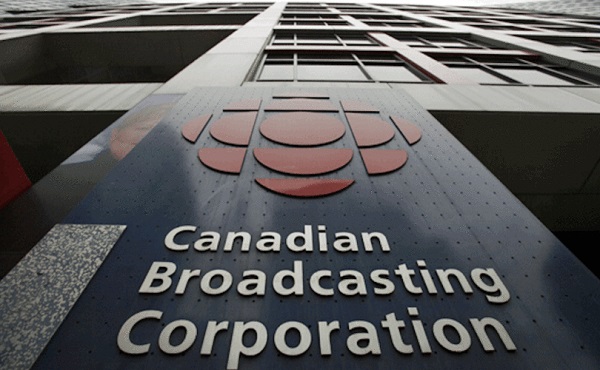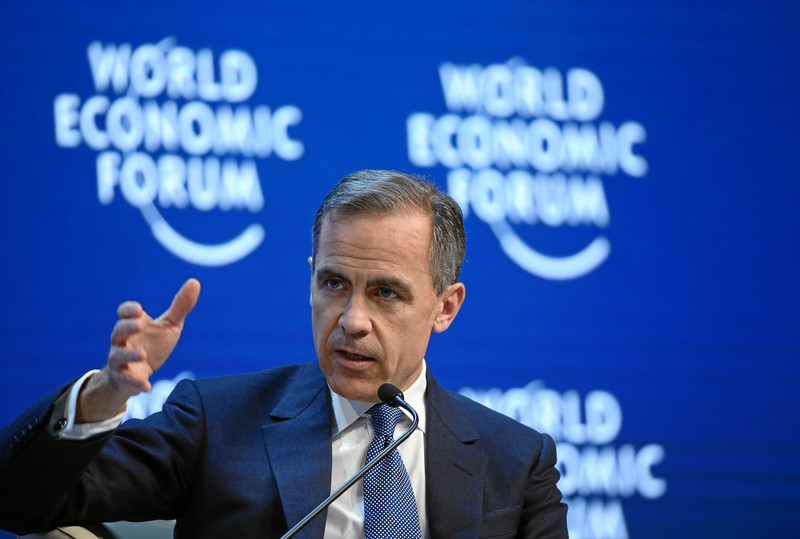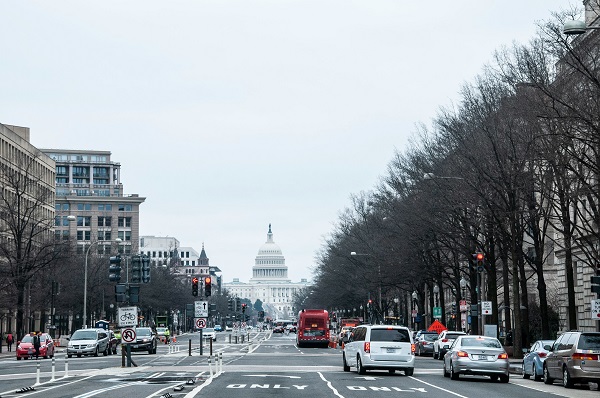Business
Conservatives grill CBC CEO for billing taxpayers $6,000 during France vacation

From LifeSiteNews
Conservative MPs have blasted the state-funded Canadian Broadcasting Corporation’s CEO after she billed taxpayers $6,000 during a vacation to France.
During an October 21 Standing Committee on Canadian Heritage meeting, Conservative MPs grilled the CBC’s Catherine Tait over her $5,869 France vacation which she claimed qualified as work since it was during the Paris Olympics.
“There were no hotel rooms in Paris that were available at a lower price than that,” Tait told the Commons heritage committee after records obtained by the National Post revealed that she stayed at the luxury Hotel du Collectionneur at $1,000 per night.
CBC CEO admits to billing taxpayers $6,000 for her time in Paris, while on a personal vacation in France.
She thinks she gets to decide when taxpayers are on the hook and when they're not. And we should just trust her.
This is abuse of taxpayer dollars.
Defund the CBC. pic.twitter.com/qr3cDRI1kC
— Jamil Jivani (@jamiljivani) October 21, 2024
“This was the official hotel for the Games. I was there with other delegates. I benefited from all the services, for example the shuttle that took us to the opening of the Games,” she continued.
Tait continued to explain that she was in France for vacation, but interrupted her vacation to cover the Olympics which took place as the same time.
“I was on a personal trip to France and I did not bill the taxpayer for my flight or travel from Canada,” she said.
“What did you bill the taxpayer for?” Conservative MP Jamil Jivani questioned.
“The hotel and the train to get to Paris,” replied Tait.
“Where did your personal trip end and your taxpayer billing begin?” he pressed.
“As part of my job, being at the opening of the Olympics was absolutely expected of me so I interrupted my holiday and took the four days to go to the Olympics,” Tait insisted.
According to her schedule, Tait attended a reception at the Louvre Museum, two meetings with non-CBC staff, three meetings with CBC staff, and attended the opening ceremony. Tait also attended the fencing, swimming and beach volleyball competitions, although it is unclear if these were in a work or recreational capacity.
Tait later claimed that questions surrounding her spending “is a clear effort on the part of members of this committee to vilify and to discredit me and to discredit the organization.”
MP Damien Kurek pointed out that Tait is one of the highest paid public employees in Canada.
“You make more than the Prime Minister,” said Kurek, noting that the prime minister currently earns $406,200 without any yearly bonus.
“You just spent $1,000 a night for a hotel room in Paris during the Olympics,” he continued. “We are in a situation where you are coming to the conclusion of your term being paid more than the Prime Minister of this country.”
Tait’s spending of taxpayer dollars comes as the outlet’s TV advertising revenue dropped nearly 10 percent last year, which the CBC admitted they do not expect to regain in the foreseeable future.
While the CBC’s overall revenue dropped 4.3 percent in 2024, funding from Prime Minister Justin Trudeau’s government increased 13 percent from $1.2 billion to $1.4 billion.
Additionally, in August, documents revealed that Tait doled out $18 million in bonuses after eliminating hundreds of jobs to cut costs.
Regardless of their low viewership, the CBC continues to receive massive subsidies from the Liberal government. Many independent media outlets and Conservative Party politicians, including leader Pierre Poilievre, have accused the outlet of bias and partisanship because of this dependency on government.
Despite these concerns, the Trudeau government has only poured money into the outlet. Beginning in 2019, Parliament changed the Income Tax Act to give yearly rebates of 25 percent for each news employee in cabinet-approved media outlets earning up to $55,000 a year, to a maximum of $13,750.
The Canadian Heritage Department since admitted that the payouts are not sufficient to keep legacy media outlets running, and even recommended that the rebates be doubled to a maximum of $29,750 annually.
Last November, Trudeau again announced increased payouts for legacy media outlets, payouts which coincidence with the lead-up to the 2025 election. The subsidies are expected to cost taxpayers $129 million over the next five years.
Similarly, Trudeau’s 2024 budget outlined $42 million in increased funding for the CBC for 2024-25.
Carbon Tax
The book the carbon taxers don’t want you to read

By Franco Terrazzano
Prime Minister Mark Carney wrote a 500-page book praising carbon taxes.
Well, I just wrote a book smashing through the government’s carbon tax propaganda.
It tells the inside story of the fight against the carbon tax. And it’s THE book the carbon taxers don’t want you to read.
My book is called Axing the Tax: The Rise and Fall of Canada’s Carbon Tax.
Axing the Tax: The Rise and Fall of Canada’s Carbon Tax
Every now and then, the underdog wins one.
And it looks like that’s happening in the fight against the carbon tax.
It’s not over yet, but support for the carbon tax is crumbling. Some politicians vow to scrap it. Others hide behind vague plans to repackage it. But virtually everyone recognizes support for the current carbon tax has collapsed.
It wasn’t always this way.
For about a decade now, powerful politicians, government bureaucrats, academics, media elites and even big business have been pushing carbon taxes on the people.
But most of the time, politicians never asked the people if they supported carbon taxes. In other words, carbon taxes, and the resulting higher gas prices and heating bills, were forced on us.
We were told it was good for us. We were told carbon taxes were inevitable. We were told politicians couldn’t win elections without carbon taxes, even though the politicians that imposed them didn’t openly run on them. We were told that we needed to pay carbon taxes if we wanted to leave a healthy environment for our kids and grandkids. We were told we needed to pay carbon taxes if we wanted to be respected in the international community.
In this decade-long fight, it would have been understandable if the people had given up and given in to these claims. It would have been easier to accept what the elites wanted and just pay the damn bill. But against all odds, ordinary Canadians didn’t give up.
Canadians knew you could care about the environment and oppose carbon taxes. Canadians saw what they were paying at the gas station and on their heating bills, and they knew they were worse off, regardless of how many politicians, bureaucrats, journalists and academics tried to convince them otherwise. Canadians didn’t need advanced degrees in economics, climate science or politics to understand they were being sold a false bill of goods.
Making it more expensive for a mom in Port Hope to get to work, or grandparents in Toronto to pay their heating bill, or a student in Coquitlam to afford food won’t reduce emissions in China, Russia, India or the United States. It just leaves these Canadians, and many like them, with less money to afford everything else.
Ordinary Canadians understood carbon taxes amount to little more than a way for governments to take more money from us and dictate how we should live our lives. Ordinary Canadians also saw through the unfairness of the carbon tax.
Many of the elites pushing the carbon tax—the media, politicians, taxpayer-funded professors, laptop activists and corporate lobbyists—were well off and wouldn’t feel the brunt of carbon taxes. After all, living in a downtown condo and clamouring for higher carbon taxes doesn’t require much gas, diesel or propane.
But running a business, working in a shop, getting kids to soccer and growing food on the farm does. These are the Canadians the political class forgot about when pushing carbon taxes. These are the Canadians who never gave up. These are the Canadians who took time out of their busy lives to sign petitions, organize and attend rallies, share posts on social media, email politicians and hand out bumper stickers.
Because of these Canadians, the carbon tax could soon be swept onto the ash heap of history. I wrote this book for two reasons.
The first is because these ordinary Canadians deserve it. They worked really hard for a really long time against the odds. When all the power brokers in government told them, “Do what we say—or pay,” they didn’t give up. They deserve to know the time and effort they spent fighting the carbon tax mattered. They deserve all the credit.
Thank you for everything you did.
The second reason I wrote this book is so people know the real story of the carbon tax. The carbon tax was bad from the start and we fought it from the start. By reading this book, you will get the real story about the carbon tax, a story you won’t find anywhere else.
This book is important because if the federal Liberals’ carbon tax is killed, the carbon taxers will try to lay blame for their defeat on Prime Minister Justin Trudeau. They will try to say that carbon taxes are a good idea, but Trudeau bungled the policy or wasn’t a good enough salesman. They will try to revive the carbon tax and once again make you pay more for gas, groceries, and home heating.
Just like with any failed five-year plan, there is a lingering whiff among the laptop class and the taxpayer-funded desk rulers that this was all a communication problem, that the ideal carbon tax hasn’t been tried yet. I can smell it outside my office building in Ottawa, where I write these words. We can’t let those embers smoulder and start a fire again.
This book shows why the carbon tax is and always will be bad policy for ordinary Canadians.
Franco’s note: You can pre-order a copy of my new book, Axing the Tax: The Rise and Fall of Canada’s Carbon Tax, here: https://www.amazon.ca/Axing-
2025 Federal Election
Poilievre To Create ‘Canada First’ National Energy Corridor

From Conservative Party Communications
Poilievre will create the ‘Canada First’ National Energy Corridor to rapidly approve & build the infrastructure we need to end our energy dependence on America so we can stand up to Trump from a position of strength.
Conservative Leader Pierre Poilievre announced today he will create a ‘Canada First’ National Energy Corridor to fast-track approvals for transmission lines, railways, pipelines, and other critical infrastructure across Canada in a pre-approved transport corridor entirely within Canada, transporting our resources within Canada and to the world while bypassing the United States. It will bring billions of dollars of new investment into Canada’s economy, create powerful paycheques for Canadian workers, and restore our economic independence.
“After the Lost Liberal decade, Canada is poorer, weaker, and more dependent on the United States than ever before,” said Poilievre. “My ‘Canada First National Energy Corridor’ will enable us to quickly build the infrastructure we need to strengthen our country so we can stand on our own two feet and stand up to the Americans.”
In the corridor, all levels of government will provide legally binding commitments to approve projects. This means investors will no longer face the endless regulatory limbo that has made Canadians poorer. First Nations will be involved from the outset, ensuring that economic benefits flow directly to them and that their approval is secured before any money is spent.
Between 2015 and 2020, Canada cancelled 16 major energy projects, resulting in a $176 billion hit to our economy. The Liberals killed the Energy East pipeline and passed Bill C-69, the “No-New-Pipelines” law, which makes it all but impossible to build the pipelines and energy infrastructure we need to strengthen the Canadian economy. And now, the PBO projects that the ‘Carney cap’ on Canadian energy will reduce oil and gas production by nearly 5%, slash GDP by $20.5 billion annually, and eliminate 54,400 full-time jobs by 2032. An average mine opening lead time is now nearly 18 years—23% longer than Australia and 38% longer than the US. As a result of the Lost Liberal Decade, Canada now ranks 23rd in the World Bank’s Ease of Doing Business Index for 2024, a seven-place drop since 2015.
“In 2024, Canada exported 98% of its crude oil to the United States. This leaves us too dependent on the Americans,” said Poilievre. “Our Canada First National Energy Corridor will get us out from under America’s thumb and enable us to build the infrastructure we need to sell our natural resources to new markets, bring home jobs and dollars, and make us sovereign and self-reliant to stand up to Trump from a position of strength.”
Mark Carney’s economic advice to Justin Trudeau made Canada weaker while he and his rich friends made out like bandits. While he advised Trudeau to cancel Canadian energy projects, his own company spent billions on pipelines in South America and the Middle East. And unlike our competitors Australia and America, which work with builders to get projects approved, Mark Carney and Steven Guilbeault’s radical “keep-it-in-the-ground” ideology has blocked development, killed jobs, and left Canada dependent on foreign imports.
“The choice is clear: a fourth Liberal term that will keep our resources in the ground and keep us weak and vulnerable to Trump’s threats, or a strong new Conservative government that will approve projects, build an economic fortress, bring jobs and dollars home, and put Canada First—For a Change.”
-

 2025 Federal Election6 hours ago
2025 Federal Election6 hours agoPoilievre To Create ‘Canada First’ National Energy Corridor
-

 2025 Federal Election20 hours ago
2025 Federal Election20 hours agoMainstream Media Election Coverage: If the Election Was a NHL Game, the Ice Would be Constantly Tilted Up and to the Left
-

 Automotive1 day ago
Automotive1 day agoAuto giant shuts down foreign plants as Trump moves to protect U.S. industry
-

 Energy1 day ago
Energy1 day agoTrump Takes More Action To Get Government Out Of LNG’s Way
-

 2025 Federal Election22 hours ago
2025 Federal Election22 hours agoMark Carney is trying to market globalism as a ‘Canadian value.’ Will it work?
-

 COVID-192 days ago
COVID-192 days agoTrump’s new NIH head fires top Fauci allies and COVID shot promoters, including Fauci’s wife
-

 Health1 day ago
Health1 day agoSelective reporting on measles outbreaks is a globalist smear campaign against Trump administration.
-

 International13 hours ago
International13 hours agoFREE MARINE LE PEN!’: Trump defends French populist against ‘lawfare’ charges








